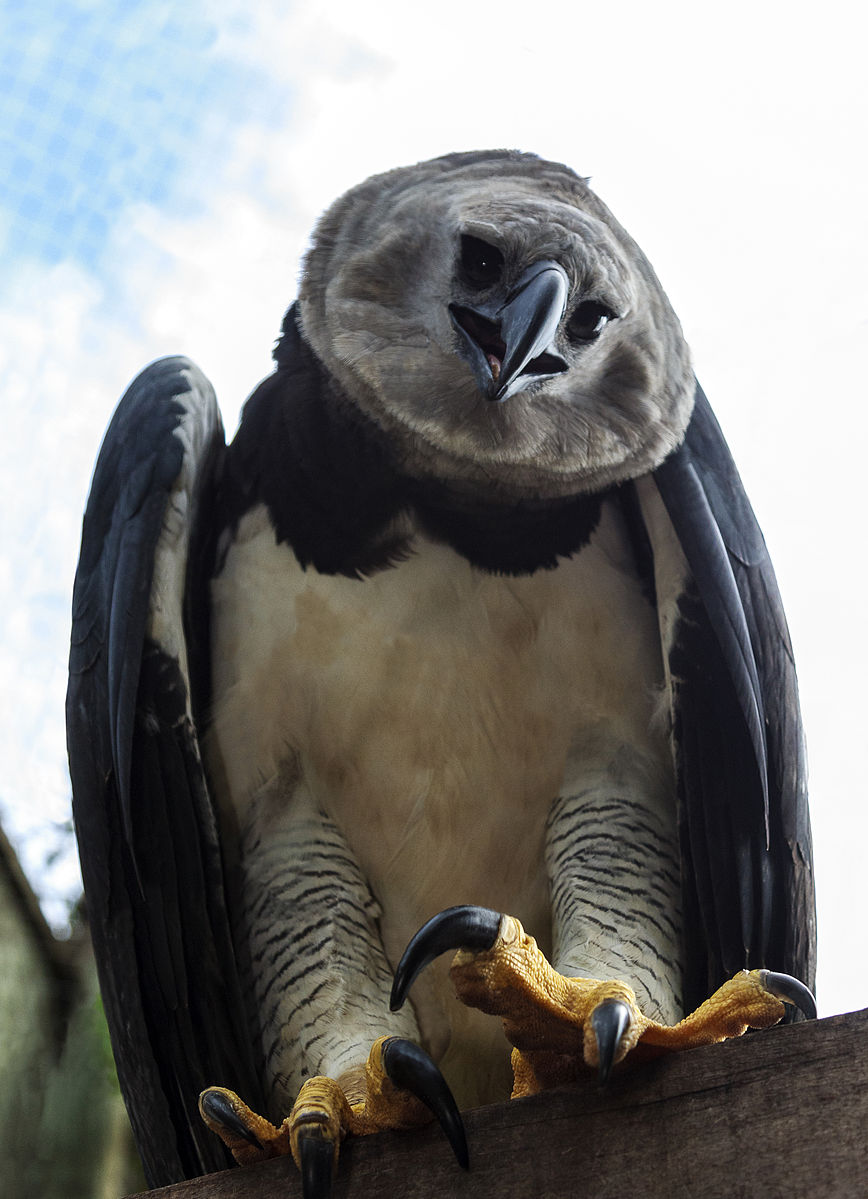Harpy Eagles are one of the largest and most powerful birds of prey in the world, known for their impressive size, strength, and hunting abilities. But how do these magnificent creatures mate and reproduce? In this blog post, we’ll dive into the fascinating details of Harpy Eagle mating and breeding behavior.
Monogamous Mating System
Harpy Eagles are monogamous, meaning they pair up for life and remain together as a breeding pair. This strong pair bond is an essential part of their mating and breeding process. The birds will often engage in courtship displays and vocalizations to strengthen their bond and prepare for the breeding season.
Breeding Season and Courtship
 Image source: Águia Harpia – Harpy Eagle by Jonathan Wilkins
Image source: Águia Harpia – Harpy Eagle by Jonathan Wilkins
The Harpy Eagle breeding season typically begins in April or May and lasts until December or January. During this time, the birds will engage in various courtship behaviors, including:
- Vocalizations: Harpy Eagles use a range of calls and vocalizations to communicate with their mates, including high-pitched whistles, deep growls, and loud screeches.
- Visual Displays: Pairs will often perform aerial displays, such as soaring and diving, to demonstrate their strength and agility to their partner.
- Bill Rubbing: One of the most distinctive courtship behaviors is the pair rubbing their bills together, which is believed to be a form of mate bonding.
Nest Building and Egg Laying
Once the pair has established their bond, they will work together to build a large, sturdy nest high up in the canopy of a tall tree. The nest can be up to 5 feet wide and 3 feet deep, and is made from sticks, branches, and other natural materials.
The female Harpy Eagle will typically lay 1 or 2 eggs, with the brooding period lasting approximately 2 months. Both the male and female take turns incubating the eggs and keeping them warm.
Chick Rearing and Fledging
Once the eggs hatch, both parents work together to protect and care for the chick(s). The chicks are altricial, meaning they are born helpless and depend on their parents for food and protection.
The parents will bring the chick(s) a steady supply of prey, such as sloths, monkeys, and small mammals, to ensure their growth and development. The chick(s) will remain in the nest for around 6 to 7 months, until they are able to fledge and become independent.
Even after the chick(s) have fledged, they may continue to return to the nest for occasional free meals over the next 6 to 10 months, as they continue to learn and develop their hunting skills.
Breeding Interval and Reproductive Cycle
Harpy Eagles typically reproduce every 2 to 3 years, with the female laying a new clutch of eggs only after the previous chick(s) have become independent and left the nest.
This extended breeding interval is due to the significant investment of time and energy required to raise a single chick to independence. The parents must provide constant care and protection for the chick, as well as hunt and bring back a steady supply of prey to ensure its survival.
Habitat and Territoriality
Harpy Eagles require large, undisturbed territories of around 30 square kilometers to support their hunting and breeding needs. They are highly territorial and will aggressively defend their nesting and hunting grounds from other Harpy Eagles and potential predators.
The birds’ keen sense of sight and ability to perch for up to 23 hours at a time make them formidable hunters and defenders of their territory. They are apex predators in their rainforest ecosystems, preying on a variety of animals, including sloths, monkeys, lizards, and small deer.
Conservation Efforts
Unfortunately, the Harpy Eagle is classified as Vulnerable on the IUCN Red List of Threatened Species, due to habitat loss and fragmentation caused by deforestation, logging, and agricultural expansion. Conservation efforts, such as The Peregrine Fund’s Harpy Eagle Release Project, are working to protect and restore Harpy Eagle populations in their native habitats.
By understanding the unique mating and breeding behaviors of Harpy Eagles, we can better appreciate the challenges they face and the importance of preserving their rainforest homes. Through continued research and conservation efforts, we can ensure that these magnificent birds of prey continue to thrive in the wild for generations to come.
References:
– Audubon: 10 Fun Facts About the Harpy Eagle
– PBS Nature Blog: Harpy Eagle Fact Sheet
– Animal Diversity Web: Harpia harpyja


